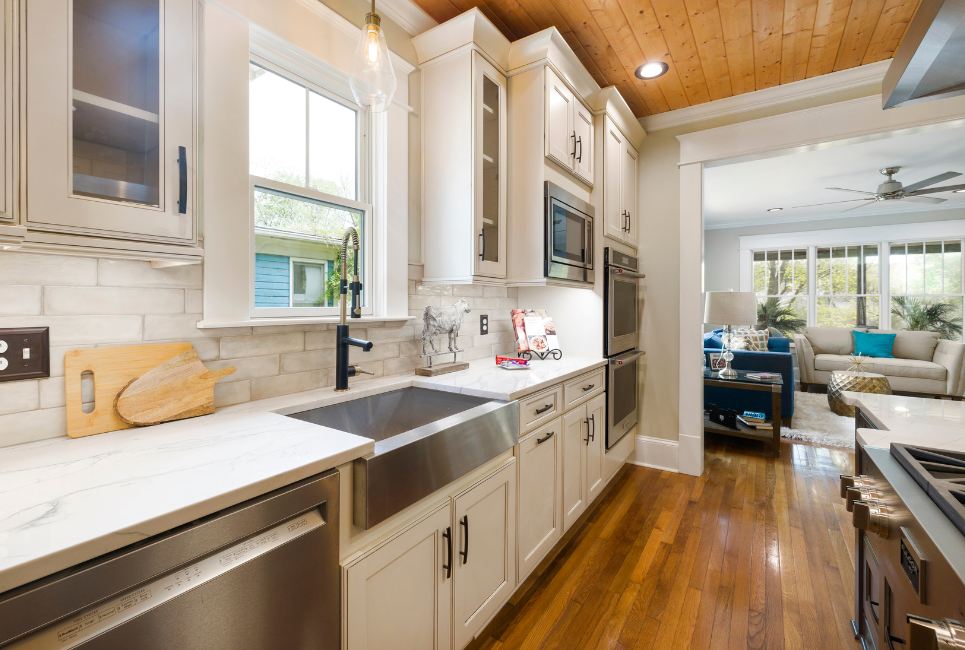When picking new cabinets, there are two types of construction to consider: framed vs frameless cabinets. Both provide varied design possibilities and unique benefits. At Hofmann, we’re here to help you make an informed decision, so you can pick the cabinet style that suits you best. Let’s dive in!
The Difference Between Framed vs. Frameless Cabinets
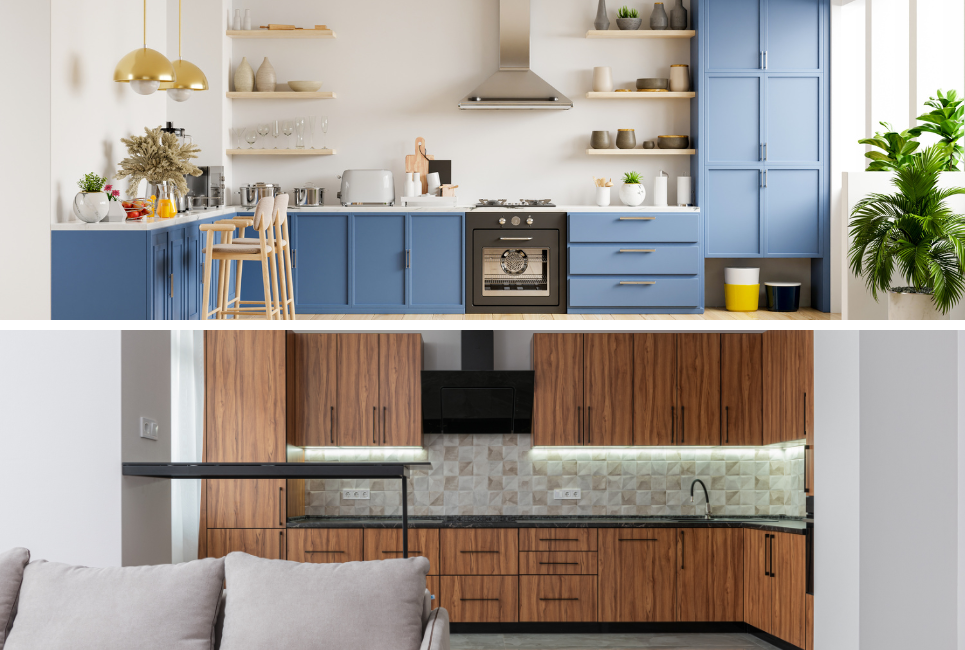
Framed and frameless are the two main types of cabinetry. Framed cabinets are a standard American style, where the cabinet door gets secured to a frame. This construction provides a traditional look with more strength and a wide variety of design options.
In comparison, frameless cabinets are more common in Europe but have recently gained popularity in the states. With these types of cabinets, the manufacturer drops the frame and secures the door to the cabinet box. Because of the construction, these cabinets provide a modern look with additional storage space. Also known as “full access” cabinets, they’re great for smaller kitchens to maximize space.
Framed Cabinets
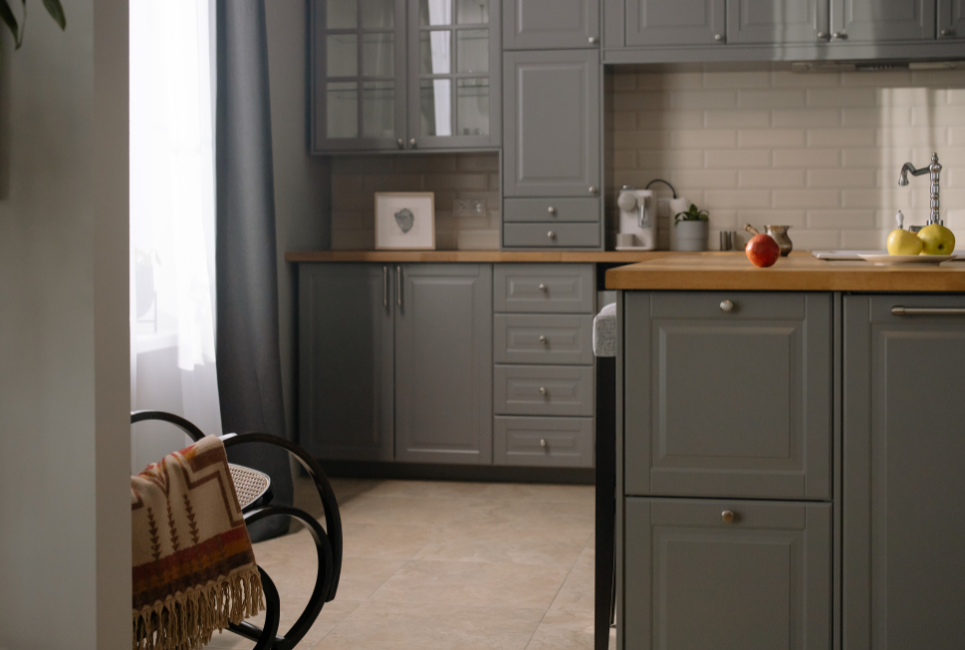
What Are Framed Cabinets?
Framed cabinets are also known as “face frame” or “American style cabinets.” Framed cabinets are a versatile choice for your kitchen or bathroom remodel. As the name suggests, the front of the cabinet is framed, and the doors and drawers are attached to the frame instead of the cabinet box.
You can identify a framed cabinet by the noticeable trim boards implemented to strengthen the construction of the cabinet box. These boards are often made of hardwood. Manufacturers typically construct cabinet boxes from engineered wood that is less prone to water damage and easier to install because of its lighter weight.
Pros of Framed Cabinets
Framed cabinets come with several advantages. Let’s take a look at some below:
- Added Stability: The face frame provides additional structural support, making the cabinets sturdier and more durable. This reinforcement helps keep the cabinet box square, preventing doors and drawers from misaligning (Kitchen Cabinet Kings) (Cabinets.com).
- Versatility in Design: Framed cabinets can accommodate a variety of door and drawer styles, including full overlay, partial overlay, and inset designs. This flexibility allows for a wide range of aesthetic options, from traditional to transitional styles (The Home Atlas).
- Easier Installation: The presence of the face frame simplifies the installation process. The frame offers a stable surface for attaching doors and hardware, making it easier to achieve proper alignment (Cabinets.com).
- Classic Aesthetic: Framed cabinets are often associated with a classic, traditional look. The visible face frame adds a sense of craftsmanship and can be a desirable feature in many kitchen designs
Cons of Framed Cabinets
- Reduced Storage Space: The face frame takes up some interior space, which can slightly reduce the overall storage capacity of the cabinets. This can be a disadvantage in smaller kitchens where maximizing space is important (Cabinets.com).
- Obstruction of Access: The center stile in framed cabinets can obstruct access to the cabinet interior, making it harder to store and retrieve larger items. This can be inconvenient for users looking for maximum accessibility (The Home Atlas) (CabinetSelect.com).
- Higher Cost: The additional materials and labor required to construct the face frame can make framed cabinets more expensive compared to frameless cabinets. This added cost can be a consideration for budget-conscious projects (Kitchen Cabinet Kings).
- Maintenance Challenges: Cleaning framed cabinets can be more challenging due to dust and debris accumulating around the face frame. This requires extra care during routine maintenance to keep them looking their best (CabinetSelect.com).
Frameless Cabinets
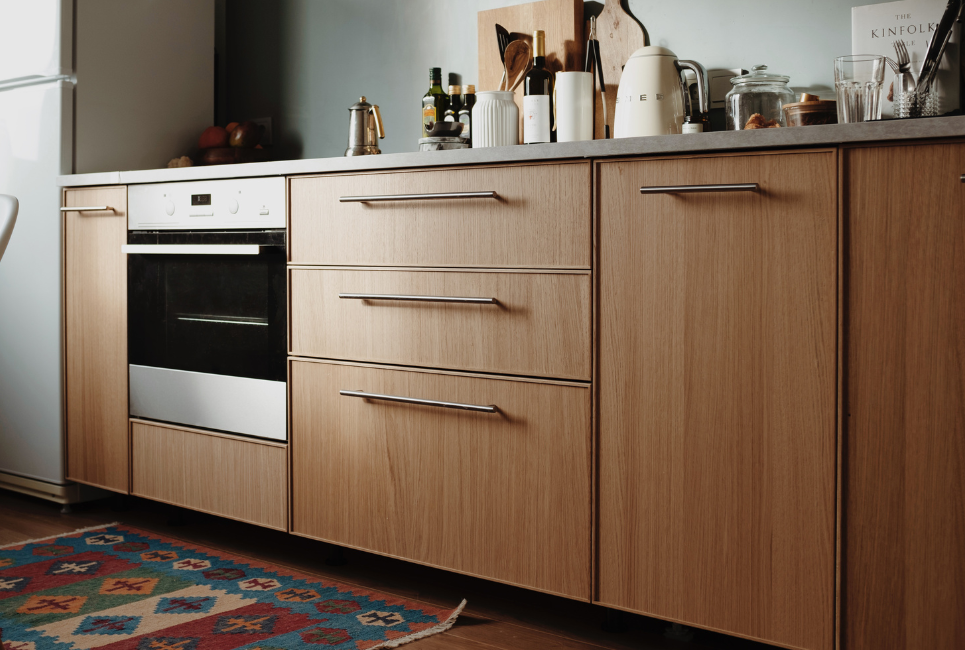
What Are Frameless Cabinets?
Frameless cabinets are an excellent choice for those seeking a modern, efficient kitchen design, provided they are made from high-quality materials and installed correctly to ensure long-term durability and functionality. A more contemporary cabinet design, frameless cabinets are the European style of manufacturing cabinets that has become increasingly popular in the US. The concept is simple – by removing the face frame, only the box remains. The doors attach directly to the sides of the cabinet box for a clean, modern look. Without the frame, frameless cabinets rely on a thicker box for strength and stability. Since the doors are mounted to the sides of the box and cover the entire cavity, only full-overlay doors are possible.
Pros of Frameless Cabinets
- Increased Storage Space: Without the face frame, frameless cabinets provide more usable interior space. This is particularly beneficial in smaller kitchens where maximizing storage is essential (Kitchen Cabinet Kings) (Cabinets.com).
- Modern Aesthetic: Frameless cabinets offer a sleek, contemporary look that fits well with modern and minimalist kitchen designs. The seamless appearance with tight door gaps contributes to a clean, uncluttered look (The Home Atlas).
- Easy Access: The absence of a face frame allows for easier access to the cabinet’s contents. This design makes it simpler to store and retrieve items, especially in smaller spaces (Cabinets.com) (CabinetSelect.com).
- Versatile Design: Frameless cabinets support full-overlay doors, which cover the entire front of the cabinet box, providing a uniform, streamlined appearance. This design is flexible and can complement various modern kitchen styles (Kitchen Cabinet Kings) (The Home Atlas).
Cons of Frameless Cabinets
- Structural Concerns: Frameless cabinets may lack the structural rigidity provided by the face frame in framed cabinets. This can lead to potential durability issues, especially under heavy loads (The Home Atlas) (CabinetSelect.com).
- Challenging Installation: Installing frameless cabinets requires precise alignment and leveling to ensure proper door and drawer operation. This complexity often necessitates professional installation to achieve the best results (Cabinets.com) (CabinetSelect.com).
- Limited Customization: Frameless cabinets typically offer fewer options for door styles and hardware compared to framed cabinets. This limitation can be a drawback for those looking for a wide range of design possibilities (CabinetSelect.com).
- Higher Cost: Frameless cabinets often require sturdier materials to compensate for the lack of a face frame, which can increase the overall cost. This makes them a more expensive option in some cases (Kitchen Cabinet Kings) (CabinetSelect.com).
How to Choose the Best Cabinets For You
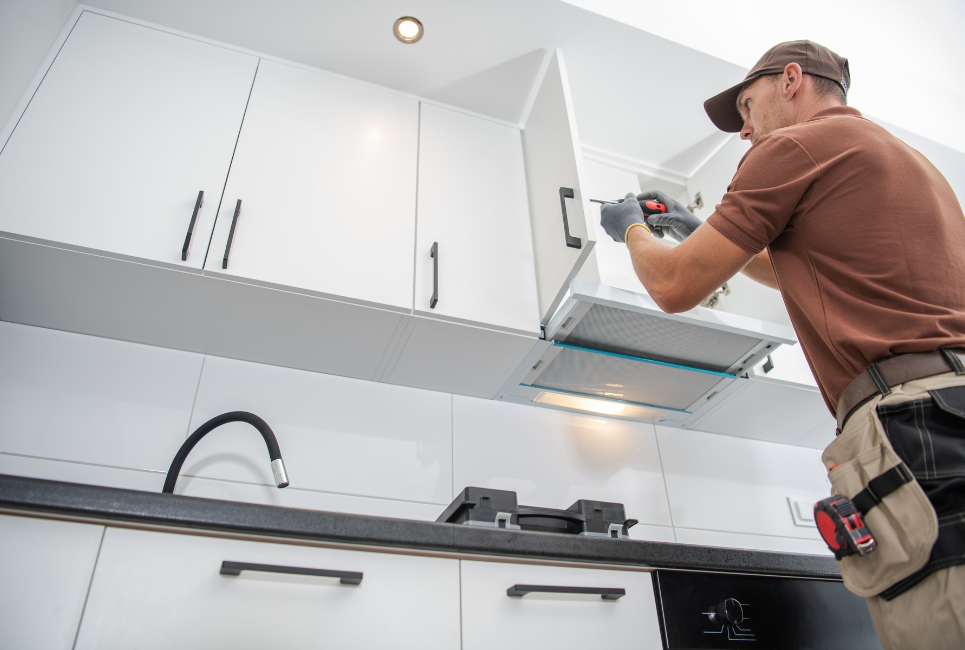
Choosing the best cabinets for you will come down to factors such as your available kitchen space, preferred aesthetic, and budget. The following factors may influence your decision-making process:
Framed Cabinets
These cabinets are preferable for kitchens with plentiful cabinet space where extra room isn’t required. They are also best for those who like a traditional design style. Framed cabinets are a fantastic choice if you like decorative hinges, flexibility for door options, (inset, partial-overlay, or full-overlay), and want to keep hinges concealed through glass cabinets.
Frameless Cabinets
Frameless cabinets will be your best bet if you are looking for a modern or contemporary design style. These cabinets don’t have a face frame— they feature engineered wood and directly attached hinges. They offer superior storage space and have larger drawers. Frameless cabinets are a better option if you have a smaller kitchen space.
Conclusion
We hope you have gained some clarity and inspiration on framed vs frameless cabinets and which choice is right for you. Contact our team of architects, planners, and interior designers if you would like help with your design or building needs.

